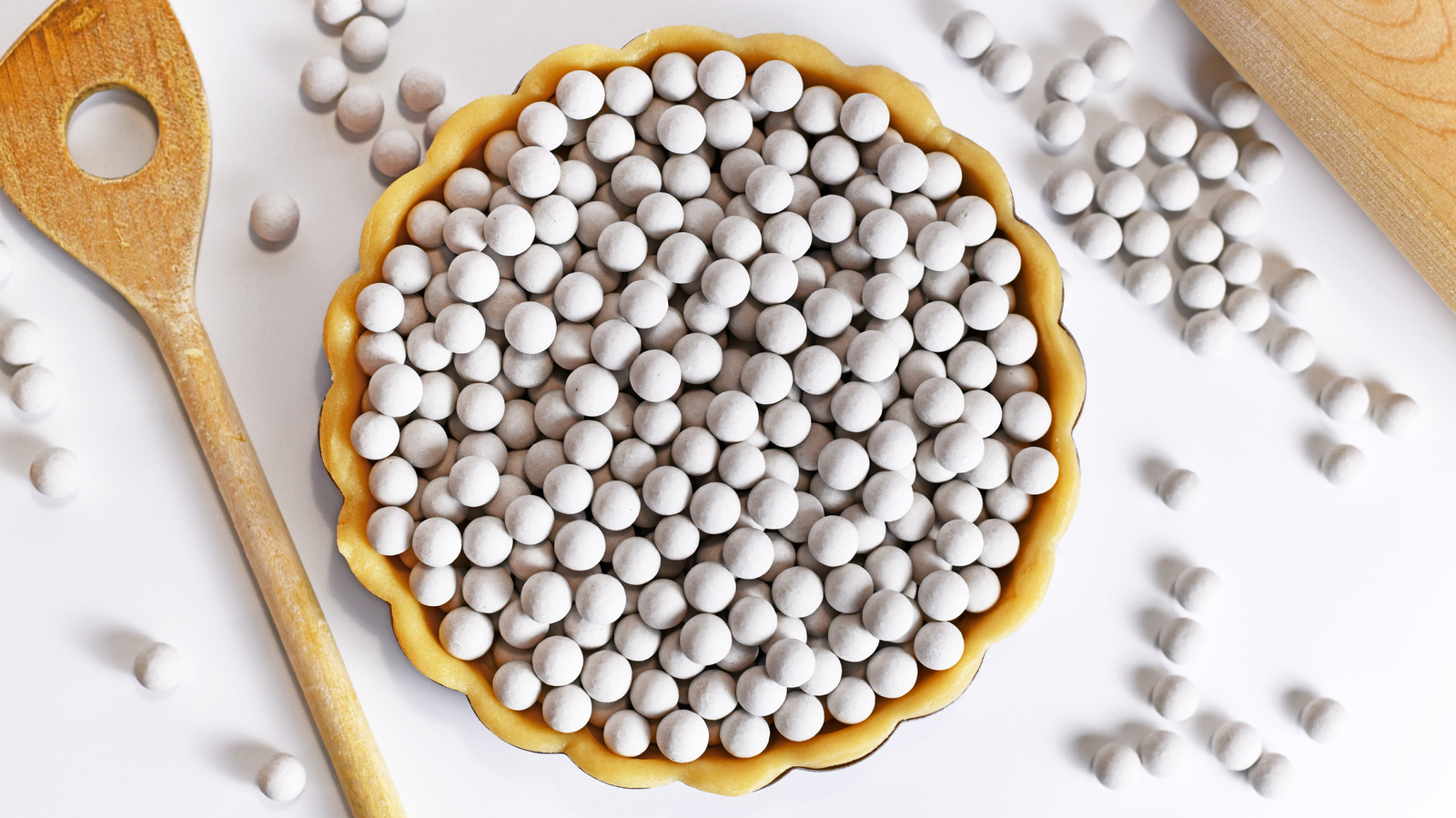
"While it might be tempting to wash the beads right out of the tin after your crust has pre-baked so the pastry can begin cooling, it's best to wait until they cool a bit. Otherwise your pie weights could undergo thermal shock by exposing them to a rapid temperature change - causing them to crack and break. This is particularly true of ceramic pie weights with relatively low heat conduction."
"Par-baking or blind baking crust with pie weights is especially useful when making high-moisture custard-filled pies like classic pumpkin or lemon meringue; or for fillings which don't require baking such as peanut butter creme or butterscotch. Pie weights are commonly made from materials like ceramic or glass, which are designed to withstand high oven temperatures up to 450 to 500 degrees Fahrenheit or more."
Pre-baking (par-baking or blind baking) with pie weights keeps crusts flaky and prevents sogginess for high-moisture custard pies (pumpkin, lemon meringue) and no-bake fillings. Pie weights, often ceramic or glass, tolerate oven temperatures up to 450–500°F but remain vulnerable to wear from rough handling, drastic temperature changes, and inadequate drying after washing. Transferring hot weights directly into cold water can cause thermal shock, cracking, and breakage, especially for ceramic beads with low heat conduction. After removing weights from the oven, let them cool five to ten minutes, then move them into a heat-proof container so the crust can continue cooling.
Read at Tasting Table
Unable to calculate read time
Collection
[
|
...
]